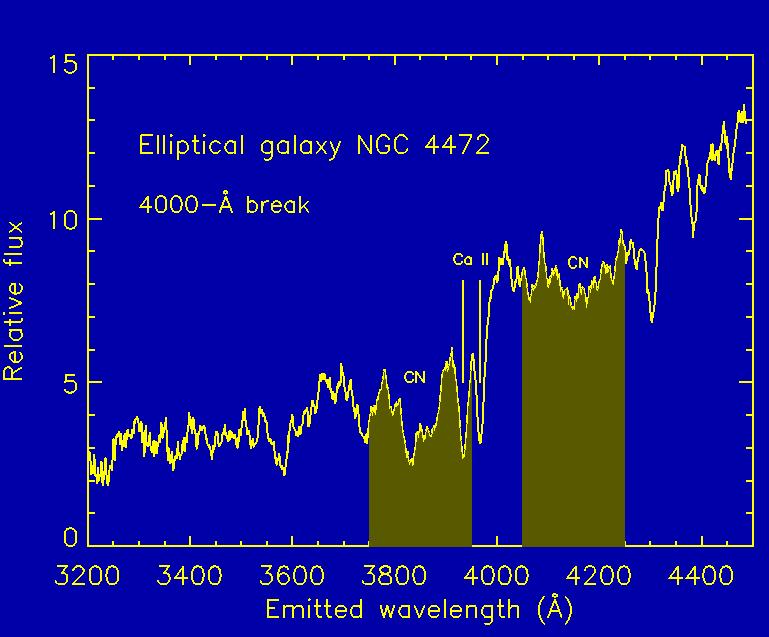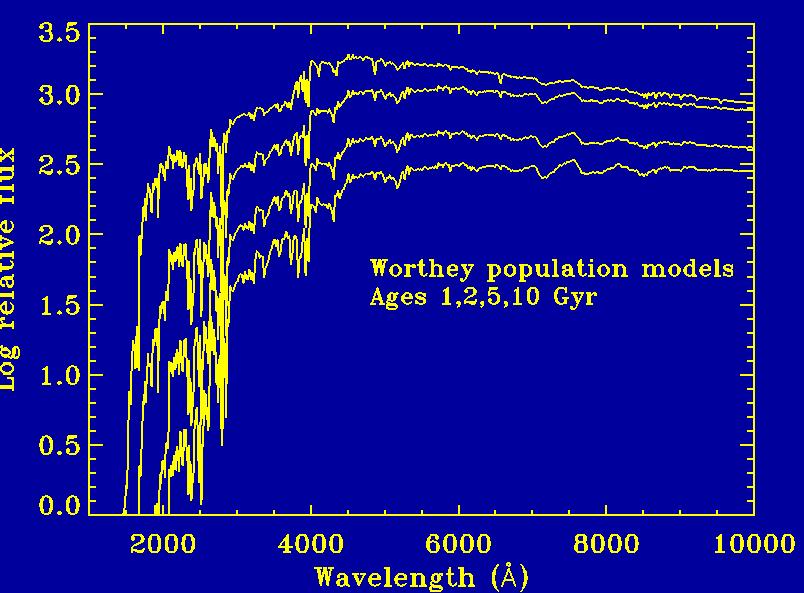This mite come in us full for some Tutorial bits on galaxy spectra
-
Tutorial bits on galaxy spectra
http://www.galaxyzooforum.org/index.php?topic=1923.0
Posted
-
it was started in the Old Forum by NGC3314
Just so I'm giving back to the community, and egged on by some PM queries - here are some tidbits about galaxy spectra, addressing things that have come up in various posts.
First up - the break in galaxy spectra near 4000 Angstroms (400 nm) in the galaxy's own reference frame, otherwise known as the Ca II break or HK break. These names refer to part of this "step" in the spectrum of a group of old stars being produced by the two strong lines of Ca+, absorption lines which were designated H and K by Fraunhofer nearly 200 years ago. [Historical note - in discussions of atomic physics, superscript 0 refers to spectral lines arises from neutral atoms of a given species, a single + to once-ionized, and so on. However, in spectroscopic discussions, we start with roman numerals - I for neutral, II for once-ionized, and so on, so Ca II absorption lines arise from calcium atoms once ionized.] Here's a piece of elliptical-galaxy spectrum showing the break region:

Notice the "step" in intensity, where the spectrum to the red side of the break is almost twice as bright as to the blue side. It's not just the calcium absorption lines that do it - there's a CN band on the blue side, and light from old stars is dropping off rapidly to the blue anyway. The strength of this break is conveniently measured by the ratio of mean intensity in the two shaded regions, and it changes a lot with age of a group of stars. Here's a set of models (from Guy Worthey's web service) showing how it strengthens as the stars age:

Thus the amplitude of the break tells at a glance something about the stellar population from a galaxy spevtrum. When an active galactic nucleus (in the post extreme cases, a quasar) is present, its spetrum is continuous right across 4000 Angstroms, so the break is diluted by whatever fraction of light the nucleus contributes. In full-fledged quasars, so little of the light comes from the surrounding galaxy that the 4000-A break can be very weak or unmeasurable.
And that leads me into the next post, spectra of quasars and other kinds of active galaxies...
The rest is on the Link
Posted